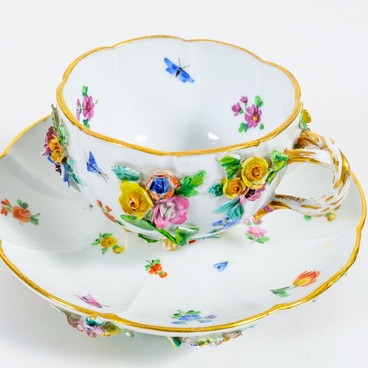In pre-revolutionary Russia, a tool that helped to easily and carefully remove shoes without fasteners and did not require bending down to do it was called “boot jack”, “footman” or “vanka”.
This tool was called a beetle due to its shape — an insect with long antennae. But there were also other types, for example, the tool could be in the form of a horned steer’s head or even a board with a slingshot. The latter option was usually used by poor folk, while wealthy families preferred metal beetles, which not only helped to take off their shoes but also decorated the hallway.
In order to take off shoes, the heel of one boot or shoe had to be placed between the beetle’s antennae. To fixate the tool, one had to step on its edge with a free foot. After that, the foot was carefully pulled out of the shoe. While taking off shoes, it was recommended not to make any sudden movements or pull hard in order to keep the heel intact.
Cast-iron beetle from the exposition of the Timofey Yevseev National Museum of the Republic of Mari El was made in the early 20th century. Such models were produced by the Kasli iron works. At that time, it was famous for its iron artistic casting: decorative figurines, mantel clocks, openwork fences, and grilles.
The Kasli foundry was opened in 1747 in Kasli, which is located in the modern Chelyabinsk region. It was founded by a Tula merchant Yakov Korobkov, but in 1751 the foundry was bought out by the famous Ural industrialists Demidovs. By this time, the Kasli casting became popular not only throughout the Russian Empire but also in many European and Asian countries.
The heyday of the Kasli iron casting happened in the 1860s — 1890s. At that time, the Kasli iron works participated in Russian and international industrial exhibitions, and its products received the highest awards. For the International Exhibition of Modern Decorative and Industrial Arts in Paris, the Kasli masters made a whole cast-iron pavilion in the Byzantine style and a sculpture “Russia”, which depicted a female warrior in chain armor, with a shield and a sword.
This tool was called a beetle due to its shape — an insect with long antennae. But there were also other types, for example, the tool could be in the form of a horned steer’s head or even a board with a slingshot. The latter option was usually used by poor folk, while wealthy families preferred metal beetles, which not only helped to take off their shoes but also decorated the hallway.
In order to take off shoes, the heel of one boot or shoe had to be placed between the beetle’s antennae. To fixate the tool, one had to step on its edge with a free foot. After that, the foot was carefully pulled out of the shoe. While taking off shoes, it was recommended not to make any sudden movements or pull hard in order to keep the heel intact.
Cast-iron beetle from the exposition of the Timofey Yevseev National Museum of the Republic of Mari El was made in the early 20th century. Such models were produced by the Kasli iron works. At that time, it was famous for its iron artistic casting: decorative figurines, mantel clocks, openwork fences, and grilles.
The Kasli foundry was opened in 1747 in Kasli, which is located in the modern Chelyabinsk region. It was founded by a Tula merchant Yakov Korobkov, but in 1751 the foundry was bought out by the famous Ural industrialists Demidovs. By this time, the Kasli casting became popular not only throughout the Russian Empire but also in many European and Asian countries.
The heyday of the Kasli iron casting happened in the 1860s — 1890s. At that time, the Kasli iron works participated in Russian and international industrial exhibitions, and its products received the highest awards. For the International Exhibition of Modern Decorative and Industrial Arts in Paris, the Kasli masters made a whole cast-iron pavilion in the Byzantine style and a sculpture “Russia”, which depicted a female warrior in chain armor, with a shield and a sword.



